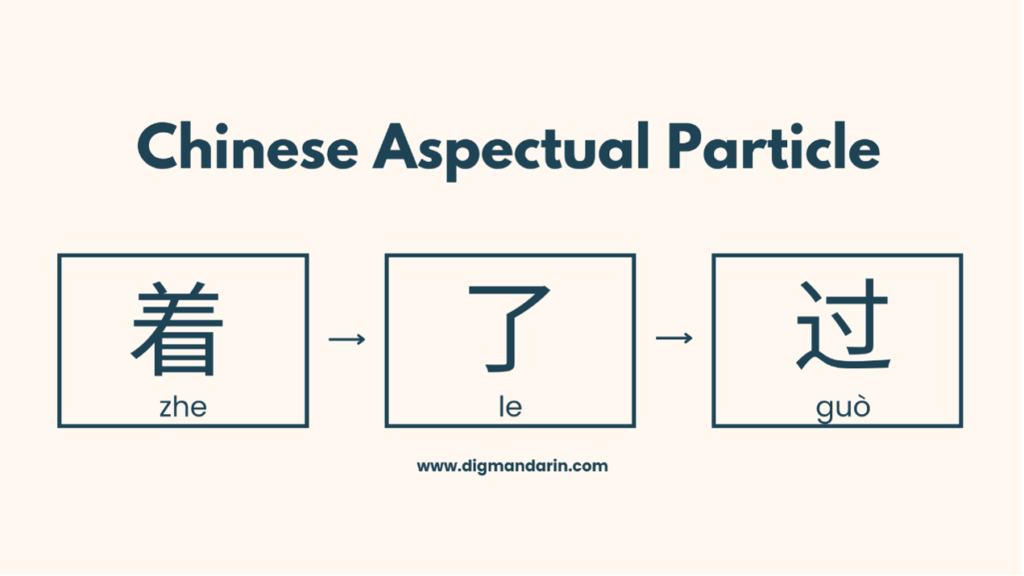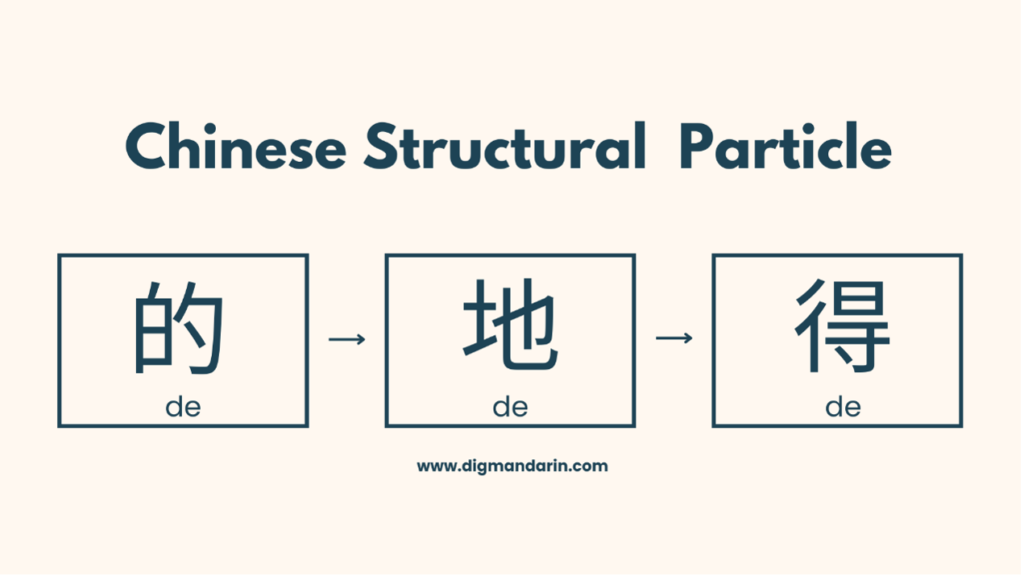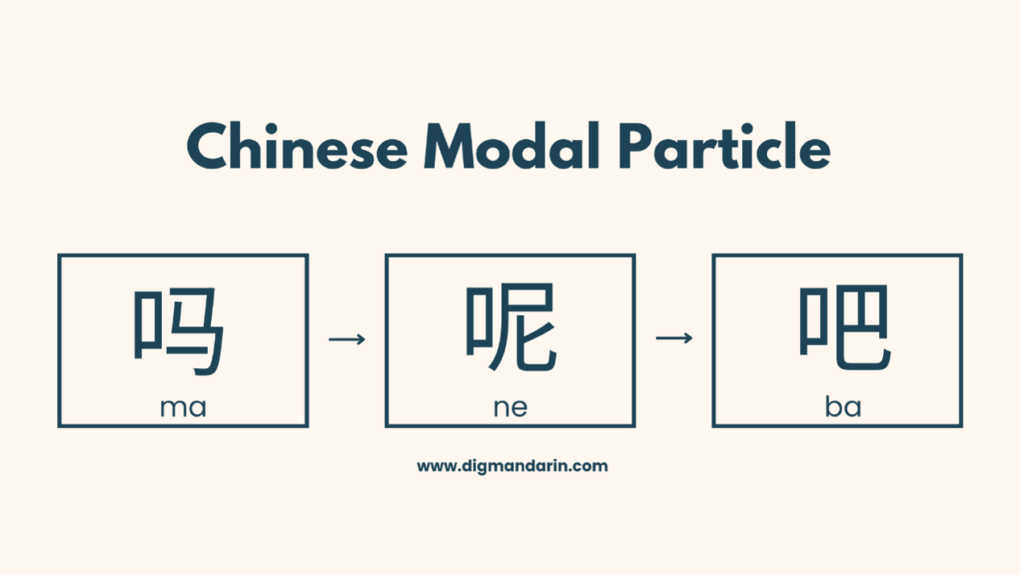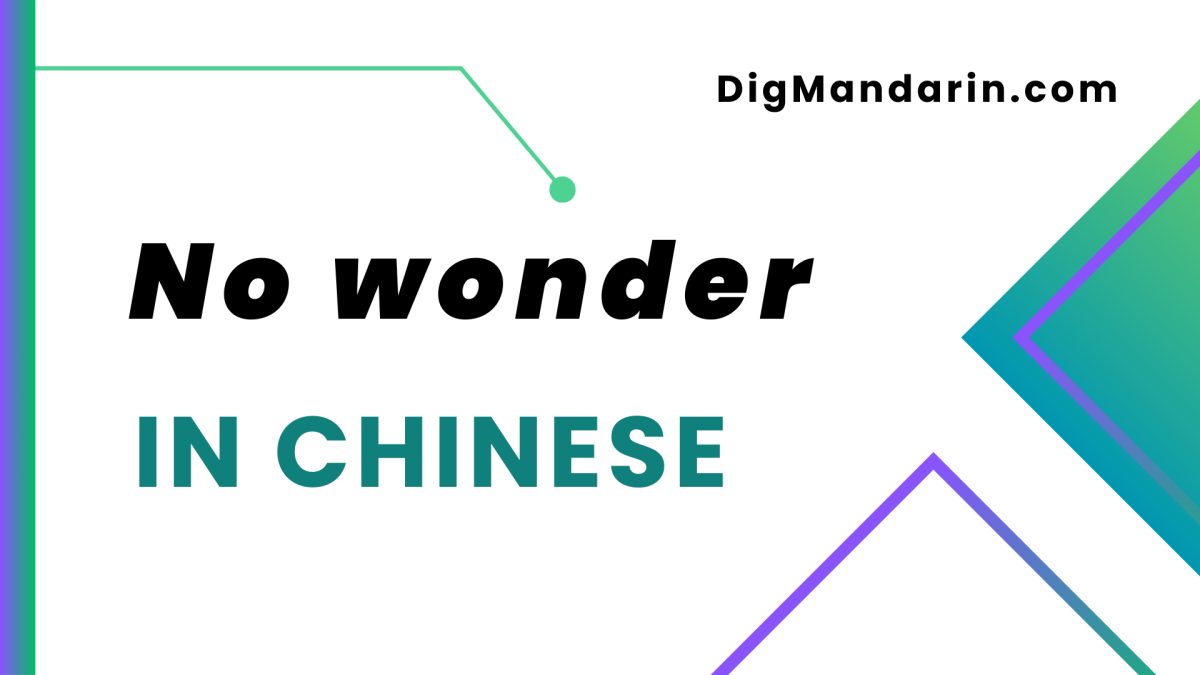Commonly Used Chinese Grammar Particles – Aspect, Structural, and Modal Particles
Many people believe that Mandarin Chinese has no grammar, but this is a misconception. While it lacks some features typically found in European languages, Chinese still has a highly structured grammar system. Unlike other languages, Chinese doesn’t change the form of words, but instead changes the whole sentence structure and order. Grammatical particles are another crucial part of Chinese grammar.
Grammatical particles in Chinese don’t have a meaning on their own but are attached to words, phrases, or sentences to serve specific functions. Nouns, verbs, and adjectives have concrete meanings, making them easier to understand and memorize. However, particles can be challenging for Chinese learners since they come in various forms that help with different functions. Some particles express tone, while others help with sentence formation or indicate tense.
Despite their challenging nature, particles are essential and practical to learn since they have fixed patterns and uses, making them convenient to use. Once learners become familiar with them, it instantly raises their ability to understand and express more complex ideas. So let’s take a look at the most common Chinese grammar particles to help boost your fluency.
Chinese Aspect Particles 动态助词
Chinese expresses tense differently from English. Instead of changing the form of verbs, particles are used to indicate tense. Aspect particles are added after verbs or adjectives to show the state of an action or change. The three most common particles used for this are 着, 了, and 过.

着 (zhe)
To show the continuation of an action or state in Chinese, 着 is added after the verb. The usual structure is Subject + Verb + 着(+ Object).
e.g.
门开着。(Mén kāizhe.) The door is open.
地上坐着一只狗。(Dìshàng zuòzhe yī zhī gǒu.) A dog is sitting on the ground.
他穿着一件长袖。(Tā chuān zhe yī jiàn cháng xiù.) He is wearing long sleeves.
When 着 is used with words like 在 or 正在, it indicates the present progressive tense .
e.g.
我正在做着饭,他就来了。(Wǒ zhèngzài zuòzhe fàn, tā jiù láile.) I was cooking when he came.
他在公园里听着歌呢。(Tā zài gōngyuán lǐ tīngzhe gē ne.) He was listening to music in the park.
我们正在思考着这件事。( Wǒmen zhèngzài sīkǎo zhe zhèjiàn shì .) We are thinking about this.
了 (le)
As a tense particle, 了 indicates the completion of an action and is often put after the verb.
e.g.
昨天我买了两件衣服。(Zuótiān wǒ mǎile liǎng jiàn yīfu.) I bought two pieces of clothing yesterday.
早上我喝了一杯咖啡。(Zǎoshang wǒ hēle yībēi kāfēi.) I had a cup of coffee in the morning.
我中午去了公园,没去图书馆。(Wǒ zhōngwǔ qùle gōngyuán, méi qù túshū guǎn.) I went to the park at noon and didn’t go to the library.
过 (guò)
To show the past tense in Chinese, use 过 after the verb to indicate that the action has happened before. However, there are certain limitations to the verbs that can be used with 过. Verbs of recognition and verbs that only happen once cannot be used with 过.
e.g.
我去过北京。(Wǒ qùguò běijīng.) I have been to Beijing.
你吃过饺子吗?(Nǐ chīguò jiǎozi ma?) Have you ever eaten dumplings?
我们学过这本书。(Wǒmen xuéguò zhè běn shū.) We have studied this book.
Chinese Structural Particles 结构助词
Structural particles in Chinese are placed before or after certain words to create specific sentence structures. In modern Chinese, 的, 地, and 得 are the most commonly used structural particles. These three words all share the same pronunciation but have distinct uses and associated structures.

的 (de)
的 is one of the first Chinese characters taught to new learners and is also the first grammatical particle introduced. As a structural particle, 的 is used after an attribute and before a noun to serve as an attributive marker. In more simple terms, it can show possession or mark that an adjective describes the noun that follows.
…… + 的 +Noun
e.g.
- 我的口红 (Wǒ de kǒuhóng) my lipstick
- 学校的书 (xuéxiào de shū) the school’s book
- 漂亮的鸟 (piàoliang de niǎo) beautiful bird
- 吃的东西 (chī de dōngxi) things to eat
- 妈妈做的饭 (māma zuò de fàn) mom’s cooking
地 (de)
Even native Chinese speakers sometimes misuse 的 and 地, both of which can be structural particles. When used as a structural particle, 地 is often placed after adjectives and adverbs to serve as an adverbial marker.
Adjective / Adverb + 地 + Verb phrase / Adjective
e.g.
学生们努力地学习。(Xuéshēngmen nǔlì de xuéxí.) The students study hard.
老师认真地上课。(Lǎoshī rènzhēn de shàngkè.) The teacher takes the class seriously.
我早早地去学校了。 (Wǒ zǎozǎo de qù xuéxiàole.) I went to school early.
得 (de)
When used as a structural particle, 得 is commonly inserted between a verb and its complement.
Verb + 得 + Complement
e.g.
他总是回来得很晚。(Tā zǒng shì huílái de hěn wǎn.) He always comes back late.
她写字写得不错。(Tā xiězì xiě de bùcuò.) She writes well.
你的话我听得很清楚。(Nǐ dehuà wǒ tīng de hěn qīngchǔ.) I heard your words very clearly.
现在的孩子懂得很多。(Xiànzài de háizi dǒngde hěnduō.) Today’s children know a lot.
Chinese Modal Particles 语气助词
Modal particles are used to express tone of voice in Chinese. They are usually placed in the middle or at the end of a sentence. Sometimes, they can even be used independently. One modal particle can express multiple tones, so it’s important to understand the context. There are five Chinese modal particles used in daily life that we will introduce here.

吗 (ma)
The modal particle 吗 indicates an interrogative tone and is used to create yes-no or rhetorical questions.
e.g.
这是你的书吗?(Zhè shì nǐ de shū ma?) Is this your book?
我可以借一点儿钱吗?(Wǒ kěyǐ jiè yīdiǎnr qián ma?) Can I borrow a little money?
那家饭店便宜吗?(Nà jiā fàndiàn piányi ma?) Is that hotel cheap?
这不是我的家吗?你怎么在这儿?(Zhè bùshì wǒ de jiā ma? Nǐ zěnme zài zhèr?) Isn’t this my home? Why are you here?
他难道不是你的朋友吗?(Tā nándào bùshì nǐ de péngyǒu ma?) Isn’t he your friend?
你认真的吗?那首歌好听吗?(Nǐ rènzhēn de ma? Nà shǒu gē hǎotīng ma?) Are you serious? Is that song good?
呢 (ne)
Unlike 吗, 呢 cannot be used for yes-no questions. However, it is still commonly used to indicate questions in alternative, positive-negative, and specific question structures.
e.g.
谁能帮我拿东西呢?(Shéi néng bāng wǒ ná dōngxī ne?) Who can help me carry something?
你在这喝酒,你妻子在哪儿呢?(Nǐ zài zhè hējiǔ, nǐ qīzi zài nǎr ne?) You are drinking here, where is your wife?
你想吃苹果还是葡萄呢?(Nǐ xiǎng chī píngguǒ háishì pútáo ne?) Would you like to eat apples or grapes?
他爱你。你爱不爱他呢?(Tā ài nǐ. Nǐ ài bù ài tā ne?) He loves you. Do you love him or not?
Additionally, 呢 can be used in declarative sentences with 在, 正在, and 正 to indicate an ongoing action or situation.
e.g.
我正在洗澡呢,你等一下。(Wǒ zhèngzài xǐzǎo ne, nǐ děng yīxià.) I’m taking a shower, wait a minute.
他正睡觉呢,小声点。(Tā zhèng shuìjiào ne, xiǎoshēng diǎn.) He’s sleeping, so be quiet.
我们在开会呢。(Wǒmen zài kāihuì ne.) We are in a meeting.
吧 (ba)
Using 吧 at the end of an interrogative sentence shows a tone of guessing or estimation when the speaker is unsure.
e.g.
我们好像见过面吧?(Wǒmen hǎoxiàng jiànguò miàn ba?) Looks like we’ve met, right?
你的工作都完成了吧?(Nǐ de gōngzuò dōu wánchéngle ba?) Is your work done?
这次考试不难吧?(Zhè cì kǎoshì bù nán ba?) This exam is not difficult, is it?
飞机大概九点到上海吧?(Fēijī dàgài jiǔ diǎn dào Shànghǎi ba?) The plane arrives in Shanghai at about nine o’clock, right?
Additionally, 吧 is commonly used in imperative sentences to indicate a softer tone when making a request or suggestion.
e.g.
我们结婚吧。(Wǒmen jiéhūn ba.) Let’s get married.
你们去玩吧,我不去了。(Nǐmen qù wán ba, wǒ bù qùle.) Go and play, I’m not going.
你快去道歉吧。(Nǐ kuài qù dàoqiàn ba.) Go and apologize.
啊 (a)
啊 is a common modal particle used to emphasize the tone of a sentence when placed at the end. In spoken language, it can also be inserted after the subject to indicate a pause.
e.g.
你儿子啊,总是不写作业。(Nǐ érzi a, zǒng shì bù xiě zuòyè.) Your son, he never does his homework.
你家人也来啊?太好了!(Nǐ jiārén yě lái a? Tài hǎole!) Is your family coming too? Great!
谁在敲门啊?(Shéi zài qiāo mén a?) Who is knocking at the door?
这个地方真漂亮啊!(Zhègè dìfāng zhēn piàoliang a!) This place is so beautiful!
Conclusion
In conclusion, these particles are some of the foundational building blocks of Chinese grammar. Aspect and structural particles, such as 了, 过, 的, 地, and 得, play critical roles in expressing verb tense, forming special sentence structures, and emphasizing tone.
Modal particles, including 吗, 呢, 吧, 啊, and 呀, help to convey various emotions and attitudes. With continued practice, mastering these particles can significantly improve your Chinese language skills and help you communicate more effectively in a wide range of settings.





This Post Has 0 Comments